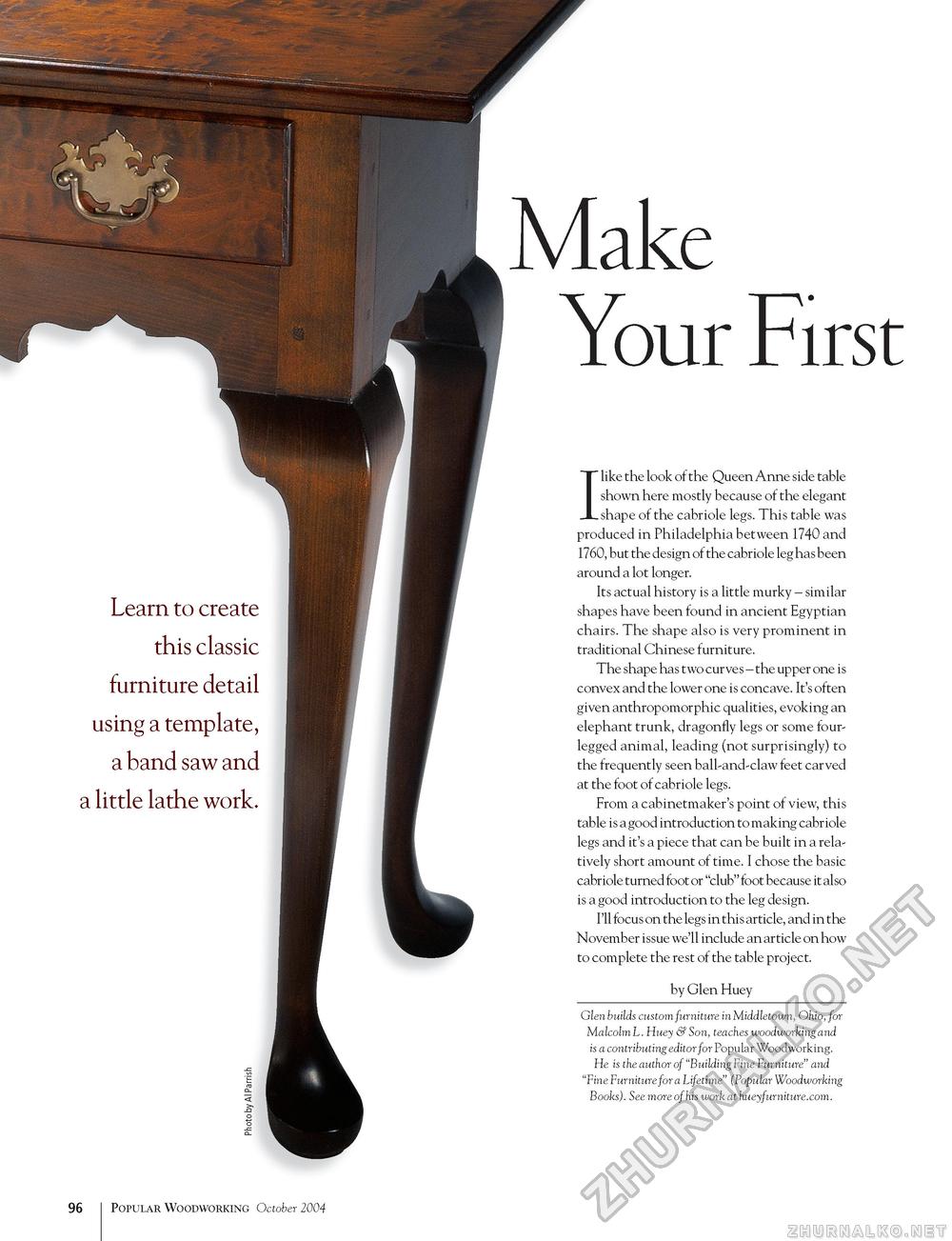Popular Woodworking 2004-10 № 143, страница 99
Make Your First Learn to create this classic furniture detail using a template, a band saw and a little lathe work. I like the look of the Queen Anne side table shown here mostly because of the elegant shape of the cabriole legs. This table was produced in Philadelphia between 1740 and 1760, but the design of the cabriole leg has been around a lot longer. Its actual history is a little murky - similar shapes have been found in ancient Egyptian chairs. The shape also is very prominent in traditional Chinese furniture. The shape has two curves - the upper one is convex and the lower one is concave. It's often given anthropomorphic qualities, evoking an elephant trunk, dragonfly legs or some four-legged animal, leading (not surprisingly) to the frequently seen ball-and-claw feet carved at the foot of cabriole legs. From a cabinetmaker's point of view, this table is a good introduction to making cabriole legs and it's a piece that can be built in a relatively short amount of time. I chose the basic cabriole turned foot or "'club" foot because it also is a good introduction to the leg design. I'll focus on the legs in this article, and in the November issue we'll include an article on how to complete the rest of the table project. by Glen Huey Glen builds custom furniture in Middletown, Ohio, for Malcolm L. Huey & Son, teaches woodworking and is a contributing editor for Popular Woodworking. He is the author of "Building Fine Furniture" and "Fine Furniture for a Lifetime" (Popular Woodworking Books). See more of his work at hueyfurniture.com. 96 Popular Woodworking October 2004 |








